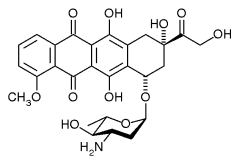Measuring plasma troponin I levels soon after high-dose chemotherapy (HOC) may allow physicians to predict which patients will develop cardiac dysfunction, according to a report published in the May issue of the Annals of Oncology. In another study, researchers found that anthracycline-induced cardiotoxicity typically begins several months after treatment initiation. In fact, the longer the delay, the worse the disease appears to be. Therefore, current recommendations to only monitor for cardiac toxicity during or shortly after drug administration should be revised, they add.
In the first study, Dr. Daniela Cardinale and colleagues, from the University of Milan in Italy, measured troponin I levels immediately after HDC in 211 women with high-risk breast cancer. Patients were considered troponin-positive if the level was at least 0.5 ng/mL. The patients left ventricular ejection fraction was determined before HDC and at several time points, up to 12 months, after HDC.
Seventy patients were troponin-positive and 141 were troponin-negative, the authors note. Over time, the ejection fraction decreased in troponin-positive patients, but remained unchanged in troponin-negative patients. In troponin-positive patients, the decrease in ejection fraction was strongly related to the maximum troponin level following HOC and to the number of troponin-positive assays.
"The innovative aspect of this new marker is that it gives us information long before functional impairment can be detected with other techniques," Dr. Cardinale said in a statement. "The possibility of identifying patients who will develop late myocardial function depression is a golden opportunity for both oncologists and cardiologists."
The second study, conducted by Dr. Benny V. Jensen and colleagues, from the University of Copenhagen, involved 107 patients with advanced breast cancer whose treatment regimens included the anthracycline epirubicin. The patients' cardiac function was assessed before, during, and a median of 33 months after treatment.
The risk of epirubicin cardiotoxicity was directly related to the cumulative dose and to patient age, the investigators note. However, individual susceptibility to the agent varied widely. The onset of cardiotoxicity occurred a median of three months or more after treatment initiation. Furthermore, the severity of the cardiotoxicity was directly related to the length of this delay. While none of the patients experienced a spontaneous return of cardiac function, treatment with angiotensin-converting enzyme (ACE) inhibitor did dramatically improve function, the researchers state.
"The lag time before progressive cardiac deterioration with dilatation occurs may ... open a therapeutic window for interventional strategies," the authors note. "We have performed and are awaiting results from a placebo-controlled blinded study for prevention of cardiotoxicity in the post-anthracycline period by ACE inhibition."
--Ann Oncol 2002; 13:699-715.
COPYRIGHT 2002 Nelson Publishing
COPYRIGHT 2002 Gale Group



